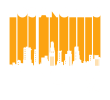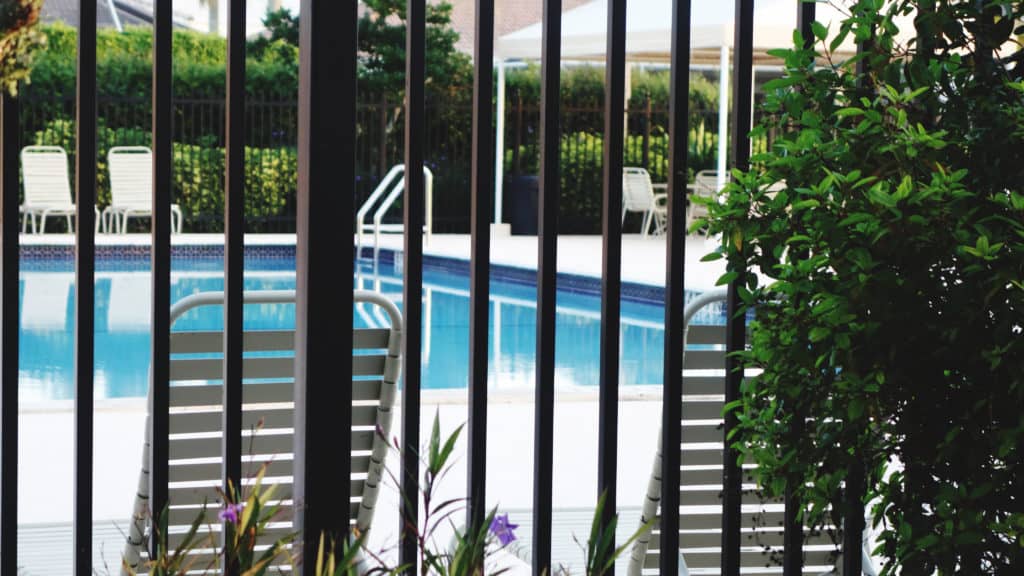Having a pool in your backyard is one of the most affordable, luxurious ways to enjoy summer. But with this comes the responsibility to make sure that you have an effective fence around it. It’s essential for safety reasons and also prevents people from trespassing on your property without permission. So how can you be sure you’re installing the perfect pool fence for your backyard?
Swimming pools safety and adding a safety fence are important factors to consider when adding a swimming pool. In Los Angeles County you are required to have a pool safety fence as well as pool gates that have self-closing hinges. There are many things to consider when it comes to purchasing or building a pool fence, but there are some key points that will help ensure that you have chosen wisely:
1) Fencing Materials
Choosing the right materials is equally as crucial as the design of your fence. Some of the most common materials for pool fences include wrought iron, aluminum, and vinyl fencing. Each material has its own benefits and downsides to consider before you decide on one over another:
Aluminum is more durable than wood but requires regular cleaning to ensure that it does not corrode over time. While this material can be pretty expensive, it also looks great. It comes in a range of different finishes, including powder-coated aluminum, which has the benefit of being rust-resistant.
Vinyl fencing offers an economical and low-maintenance solution. It is also more versatile than the other options, as it can be shaped into a variety of designs to compliment your home or garden’s aesthetics.
No matter which material you choose for your pool fence, make sure that you are getting one with strong enough components so that it will not break under pressure.
2) Pool Fencing Height
As well as fencing materials, it is vital to keep in mind the height of your pool fence and what will be on either side of it:
If you have a busy street directly next to the pool, consider installing a tall wooden or aluminum fence so that people cannot see into your yard from outside. This will help prevent neighbors from peeking over or receiving any unwanted attention.
If there is a tall hedge on one side of your pool, it may not need as high of a wall around it because nobody can see into it from that angle anyway. This means that you could use something like chain-link fencing, barbed wire, or even a simple garden fence post to ensure that your yard is well-contained.
3) Pool Fence Safety
One of the main reasons people install pool fences is for safety, especially when children are in the area. Ensure that you have a fence with solid components and one where it’s not possible to climb over or squeeze through any gaps between the panels.
You should also make sure that your gate has some sort of locking mechanism so that it cannot be opened by children who may not know any better. Some people install a lock that can only be unlocked from inside the house so that there is no need to have an extra key hanging around somewhere near the pool just in case of emergencies or older guests who forget their keys!
4) Hire Los Angles Fence Co for Your Next Pool Fence
Never do this on your own as this may lead to spending more money and time on your project. As tempting as it may be, getting a friend or family member to help you build your own pool fence is not recommended. You should hire a professional to do this for you, as they will know exactly what is required and how to install it properly.
In addition to this, they will be able to do it quickly and with minimal disruption so that you can have your pool fence installed as soon as possible. Hiring the right fence contractor with quality customer service is an important step in this process. Understanding the local pool fence regulations is just as important. Below we’ve added Los Angeles backyard pool barrier laws so you are familiar with the
Los Angeles Pool Barrier Laws
| Category | Pool Fence Law / Regulation |
| The Location | A. The pool enclosure shall be constructed around the pool, except when approved by building official. B. Stairways, ramps, and landings for slides or similar pool features shall have handrails and/or guardrails when they are 30” above adjacent grade |
| The Height | The top of the pool enclosure shall be at least 5 feet (60 inches) above grade. The height shall be measured from the side away from the pool. |
| The Clearance | Maximum vertical clearance between grade and the bottom of the barrier shall be 2 inches above earth. Maximum vertical clearance between solid surface (concrete deck) and the bottom of the barrier shall not allow a passage of a sphere 4 inches in diameter. |
| Climbing | Any decorative design work on the side away from the pool, such as protrusions, indentations, or cutouts, which render the pool enclosure easily climbable, is prohibited. |
| Openings | Gaps or voids, if any, shall not allow passage of a sphere 4 inches in diameter. F. Horizontal members that create a “ladder” affect are prohibited unless stated otherwise below. |
| Gates | 1. Pedestrian walkway access gates shall be part of the pool enclosure and shall meet all the construction requirements. The gate shall be self-closing and self-latching. 3. The gate shall open or swing away from the pool 4. The release mechanism of the self-latching device shall not be located less than 60 inches from the bottom of the gate. 5. The following doors and gates are prohibited as part of the pool enclosure due to intrinsic problems with self-closing or self-latching devices: a. Double doors or pairs of gates. b. Doors or gates wider than 4 feet. c. Driveway gates. d. Overhead garage doors. 6. Additional locking devices, hooks or bolts may be installed for security of the premises, provided normal satisfactory operation of the required self-closing and self-latching systems is maintained. |
| Construction Materials | |
| Chain Link | 1. The wire for the chain link shall not be less than 11-gauge. 2. The posts shall be galvanized pipe at least 1-1/4 inch in diameter and spaced not more than 10 feet apart. 3. The posts shall be set not less than 12 inches into concrete. The concrete shall be poured into a hole minimum 6 inches in diameter and minimum 18 inches deep. 4. Openings in the chain link shall not be greater than 1-3/4 inches measured horizontally. |
| Solid Wood | 1. Redwood or pressure treated posts shall be no less than 3 inches by 3 inches, set no more than 10 feet apart, and embedded at least 18 inches in the ground. 2. The vertical boards at least 1/2-inch thick shall be placed side-by-side without any gaps or spaces. 3. The vertical boards shall be securely fastened to no less than two horizontal rails that are at least 2 inches by 3 inches in cross section. 4. The horizontal rails shall be located on the pool side of the fence and more than 48 inches apart. |
| Masonry/Concrete | 1. Masonry fences shall be supported on a foundation of concrete extending not less than 12 inches below grade, not less than 12 inches in width, and not less than six inches in thickness. 2. Reinforcing steel located in the masonry wall, when required, shall be embedded 16 diameters into the footing. |
| Wrought Iron | 1. When the vertical members are spaced 1-3/4 inches maximum, then the horizontal members shall be located on the inside face of the fence, or 2. The distance between the tops of horizontal members shall not be less than 45 inches |
| Combination of material | Different materials used in the horizontal direction shall be permitted, provided each portion of the pool enclosure meets the requirements of this section. Different materials used in the vertical direction (one-on-top of another) shall be prohibited, unless approved by the building official |



